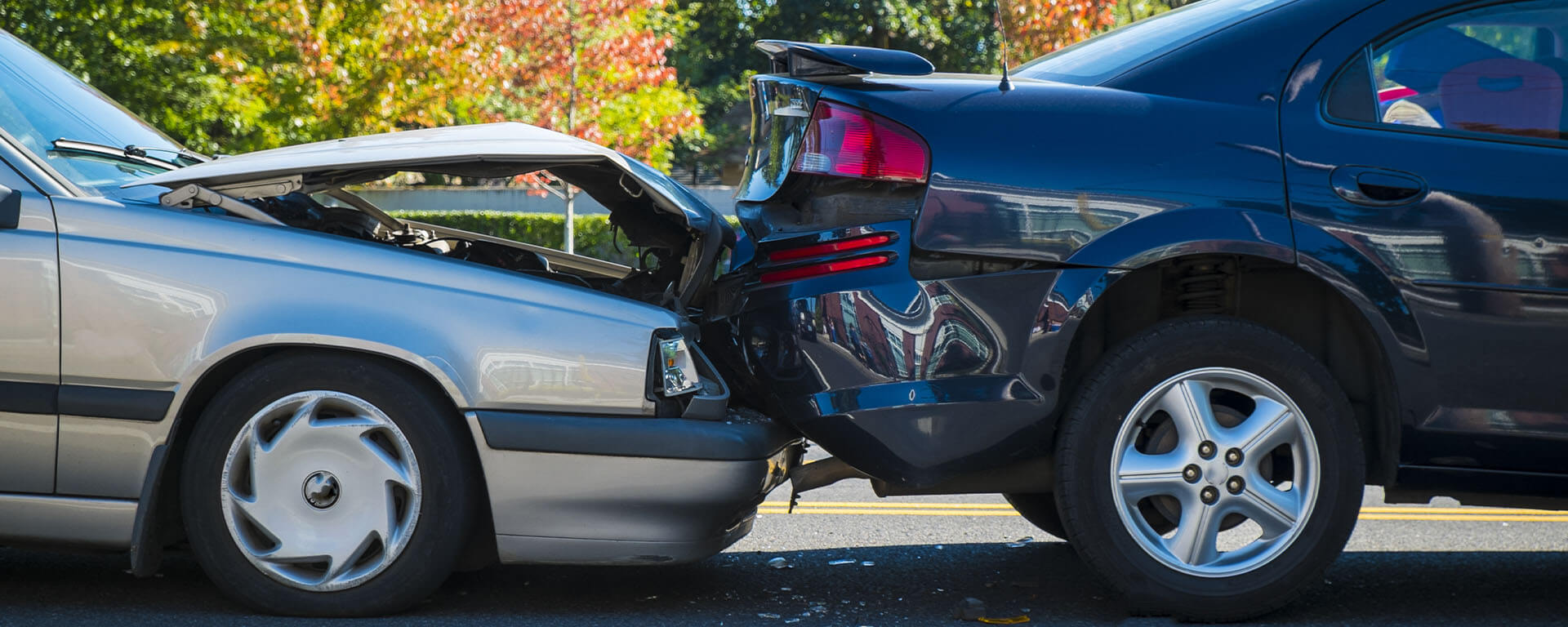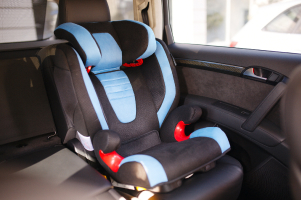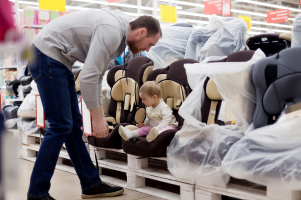


Utah has a blanket seatbelt and child restraint law. Children under eight years old must travel in a child restraint device appropriate to their age, height, and weight.
Other than that, Utah child car seat laws offer little additional guidance.
Here are guidelines on complying with these laws and keeping your children safe. If you have any further questions & are in need of assistance you may need to contact a knowledgeable car accident lawyer in Utah.
Table of Contents

Blanket laws require that you rely on your judgment when choosing a child car seat. The law merely requires that children use a properly fitting seat until they are 57 inches (4’9″) tall. Also, authorities recommend that children stay in the back seat until age 13.
Rear-facing car seats are also called infant seats. They are the first seats new parents buy for their family addition. As the name implies, they are rear-facing and connect to restraints provided in cars.
These seats are recommended until age one and for children weighing between 4 and 40 pounds. You want a chair that meets federal standards.
However, if you plan road trips as your child grows, know that some states require rear-facing seats until two years old. So, consider buying a rear-facing seat that you can use for as long as possible.
Forward-facing car seats include convertible and booster seats.
A convertible seat is an excellent purchase choice. It can be rear-facing for as long as your child needs it (or a state requires it), but it can also be forward-facing when your child is older. As long as you don’t have any car wrecks, you can likely use a convertible seat until your child is old enough for a booster.
It would be best if you waited until the child is one year old to switch forward-facing. The convertible seat can last until the child weighs between 50 to 65 pounds, depending on the manufacturer’s standards.
Convertible and rear-facing seats anchor to the vehicle and use their seat belts. Booster seats raise the child so the vehicle’s seat belt fits them.
Utah laws require children to ride in boosters until they turn 8. Even then, waiting to remove the booster is safer until the child is at least 57 inches tall.
Utah has a Seat Belt Law. It requires all drivers and passengers who aren’t in seats to use the vehicle’s seat belts. The law applies to passenger vehicles and recreational vehicles (RVs). Failure to follow the law results in a $45 fine.
Seat belts are essential. Unrestrained crash occupants are 14 times more likely to die of injuries than those wearing seat belts.
For seat belts to work, they must fit properly. You will know your child is ready to graduate from the booster seat to the vehicle seat when:
If the seat belt rests on the soft part of the abdomen, neck, or face, keep using the booster seat. Never put the shoulder belt behind the child’s belt or under their arm! It’s also helpful to do a safety belt fit test to ensure a proper and comfortable fit.
There are federal laws in addition to Utah child car seat laws. They focus on consumer protection, but being aware of them helps with vehicle choices.
Federal Motor Vehicle Safety Standard 213 (FMVSS 213) governs performance and design criteria for child restraint devices for children weighing up to 80 pounds. Their standards certify requirements for crashworthiness, labeling, instructions, buckle and release pressure, and flammability. Manufacturers must self-certify that they meet or exceed the standards.
The other standard is Federal Motor Vehicle Safety 225 (FMVSS 225.) This standard requires the LATCH system that is currently available in most vehicles. Lower anchors must be at the crease between the back and seat cushion. There must also be a top tether anchor. If the car has more than two seat rows, one of the lower anchor systems must be in the second row.

Frankly, yes!
As indicated, a convertible seat can be rear and front-facing. This design has three advantages.
First, if you travel cross-country, car seat laws will change. It may be OK for your 2-year-old to ride front-facing in Utah, but if you travel north to Washington, they must be rear-facing. A convertible seat allows you to adjust to that circumstance.
Next, you can use a convertible seat longer, especially if you can adjust its legroom. You can use rear-facing until your child is old or big enough to ride front-facing, avoiding purchasing a new car seat.
Finally, in its crash test, Consumer Reports discovered that rear-facing convertible seats offer more protection than traditional rear-facing sheets. Infants in convertible seats were less likely to sustain head injuries, a common injury for young children in accidents.

The Utah child car seat laws and federal consumer protection help keep children safe, but parents must also make sure they choose the best safety seats. Here are seven tips on finding good car seats.
You want the car seat to fit your child’s current developmental stage. Don’t try to stuff babies into too-large seats or make tiny seats last as long as possible. Your child will be uncomfortable and unsafe. Buying a child safety seat with appropriate height and weight limits is crucial.
Here are the appropriate standards for current car seat types:
One way to allow more prolonged usage of all these seats is to consider legroom. Many parents unintentionally graduate their kids to the next seat too early because they need more legroom. Choose chairs with adjustable legroom, especially at the baby and toddler stages. That way, you can keep your seats longer.
You want a seat with all the federal approvals. As mentioned above, certified car seats contain consumer labels and warnings. Consumer Reports provides examples of these required marks indicating federal approval.
A used car seat may seem like a good deal until you have a wreck and your child gets hurt. Generally, you should only use older seats if you know a seat’s full history.
Also, never use car seats that are:
A theme keeps popping up here–don’t look for bargains on car seats. Going with unknown or less-known brands means risking your child’s safety. Established brands have a long history of adapting to federal and state standards and growing a reputation for safety.
There are buying guides available if you feel overwhelmed by choices. You want to know your child and your car’s latch system before you buy. Besides choosing a trusted brand, also choose trusted retailers. Select one with a generous return policy if the seat doesn’t work for you or your child.
Once you find a seat that works for your car and child, it is time to learn how to install it correctly. This step is often challenging to parents because many seat designs are pretty complex.
Here are tips to ensure correct installation:
Once secured, most rear-facing and front-facing seats are self-explanatory for securing your child. But since booster seats depend on the vehicle’s seat belt system, you have to take these extra steps to secure your child in the seat:
Parents concerned about correctly installing and fitting car seats can visit a fitting or inspection station. It’s a good idea and reassuring to check installation before using the seat for your child.
Here are resources for finding a fitting station near you:
Manufacturers may recall child safety seats if they no longer comply with Utah child car seat laws or federal standards. Sometimes, they may find a defect and provide resources to fix or replace the car seat.
Even if you buy a new seat, there are chances it is a recalled model. Be wary of new seats that are deeply discounted on sale. Also, if you borrow an older seat or keep one used by an older child, consider checking for recalls. The NHTSA allows you to check for seat recalls based on its NHTSA number, brand name, and model.

Even when you take all the precautions and follow Utah child car seat laws, accidents remain a jarring experience, especially for youngsters. Parker & McConkie started representing car accident victims in 1978, and we remain committed to families who faced harm due to someone’s negligence. If you and your children suffer injuries from an auto accident, please call us at (801) 845-0440 or complete our online contact form.
Call 801-845-0440 to get in touch with a member of our firm after your accident. We can review your case for free!



